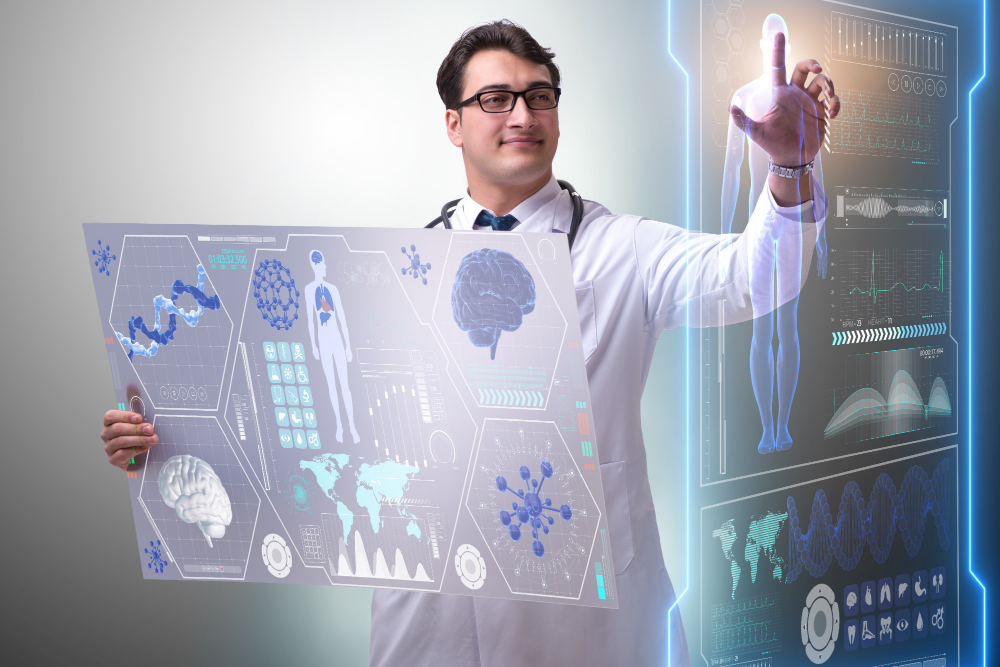Optimizing Healthcare Operations with AI, Cloud, and Virtual Delivery Centers: A Strategic Guide for CIOs and Technology Leaders

Healthcare is undergoing a massive digital shift, yet operational inefficiencies, workforce shortages, rising patient expectations, and outdated IT systems continue to hold back progress. CIOs, CTOs, and technology leaders are faced with a monumental challenge—how to optimize healthcare operations while maintaining cost efficiency, regulatory compliance, and security.
Healthcare organizations can no longer rely on traditional, fragmented IT infrastructures. The solution? AI-driven automation, cloud-based interoperability, SaaS-powered scalability, and Virtual Delivery Centers (VDCs) for seamless healthcare operations.
This article provides a deep, strategic dive into:
Key operational challenges in healthcare and their technological impact.
How AI, Cloud, and Enterprise Tech are solving these bottlenecks.
How Virtual Delivery Centers (VDCs) can create a scalable, efficient healthcare ecosystem.
Before we discuss solutions, let's examine the biggest challenges that slow down healthcare operations:
1. Administrative Overload & Inefficient Workflows
Over 30% of a physician’s time is spent on administrative tasks, not patient care.
Slow documentation processes create delays, impacting operational efficiency.
Staffing shortages mean hospitals are struggling to maintain 24/7 operations.
2. Siloed IT Systems & Poor Interoperability
Many healthcare organizations use legacy, on-premise EMR/EHR systems that don’t integrate well with modern SaaS and AI tools.
Data exchange between hospitals, insurance providers, and pharmacies is fragmented, leading to errors and redundant workflows.
Without interoperability, patient data cannot be shared efficiently across different facilities.
3. Inefficient Resource Utilization & Cost Pressures
Poor resource allocation in hospitals leads to wasted capacity and staff overwork.
High costs associated with infrastructure, software licensing, and IT maintenance make it difficult for healthcare organizations to scale efficiently.
Lack of predictive analytics prevents hospitals from proactively managing staff and patient flow.
4. Security, Compliance, and Data Governance Gaps
Healthcare data breaches increased by 35% in 2023, making cybersecurity a top concern for CIOs and CTOs.
Strict compliance regulations (HIPAA, GDPR, HITRUST, and PCI DSS) require continuous monitoring and governance—something traditional IT systems struggle to maintain.
5. Patient Experience and Engagement Gaps
Long patient wait times, poor appointment scheduling, and lack of real-time updates impact patient satisfaction.
Telemedicine adoption is growing, but many healthcare organizations lack the infrastructure to support high-quality remote consultations.
No AI-powered personalization—patients still experience a “one-size-fits-all” approach in healthcare services.
The solution? A technology-first approach with AI, Cloud, SaaS, and Virtual Delivery Centers (VDCs).
1. AI-Powered Automation for Healthcare Workflows
Artificial Intelligence is redefining healthcare operations by automating patient data entry, appointment scheduling, medical coding, billing, and predictive analytics.
AI-based clinical documentation assistants like Nuance Dragon Medical One automate patient note-taking.
AI chatbots (Babylon Health, Ada Health) handle initial patient queries and appointment scheduling.
Predictive analytics for staffing—AI tools help hospitals predict peak patient inflows and adjust staffing levels accordingly.
AI-powered coding tools (3M M*Modal, Change Healthcare) automate insurance claims and billing processes.
Machine Learning (ML) fraud detection helps identify irregularities in medical billing, preventing financial losses.
AI-driven telehealth assistants provide personalized recommendations and treatment options.
Natural Language Processing (NLP) improves patient-provider interactions by analyzing real-time conversation data.
✅ CTOs should focus on AI adoption for workflow automation, patient engagement, and fraud detection to optimize operational efficiency.
2. Cloud-Based Interoperability & Data Integration
Cloud computing is the backbone of digital healthcare transformation, offering scalability, interoperability, and security.
Reduces IT infrastructure costs by eliminating on-prem data centers.
Enables real-time access to patient records across hospitals, clinics, and pharmacies.
Provides scalable, on-demand resources to manage fluctuating patient loads.
Epic Systems Cloud, Cerner Millennium, and NextGen Healthcare provide cloud-integrated EMRs for real-time data sharing.
Amazon HealthLake, Google Cloud for Healthcare, and Microsoft Azure Health Data Services enable secure, AI-powered analytics on cloud-stored healthcare data.
Automated compliance reporting for HIPAA, GDPR, HITRUST, and SOC 2.
AI-powered anomaly detection prevents data breaches before they happen.
Zero-trust security frameworks ensure only authorized users can access sensitive healthcare records.
✅ CIOs should focus on cloud migration strategies to drive efficiency, compliance, and cost reduction.
SaaS platforms are solving inefficiencies in patient management, remote healthcare, and workflow automation.
Telehealth SaaS: Teladoc Health, Amwell, and Doxy.me enable virtual consultations with EHR integration.
Patient Engagement SaaS: Updox, Luma Health, and Solutionreach improve appointment scheduling and follow-up care.
e-Prescription SaaS: DrFirst, Kareo, and Surescripts allow digital prescriptions with pharmacy integration.
Reduces operational costs—No need for expensive on-prem licensing.
Enhances agility—New features are continuously updated without disruption.
Ensures seamless integrations—SaaS platforms integrate directly into EMRs and hospital management systems.
✅ CIOs should prioritize SaaS adoption for cost savings, rapid deployment, and streamlined patient services.
While AI, Cloud, and SaaS optimize workflows, Virtual Delivery Centers (VDCs) enable scalable, flexible healthcare operations.
What is a Virtual Delivery Center (VDC)?
A VDC is a fully remote, AI-powered healthcare operations hub that handles administrative support, revenue cycle management, claims processing, telehealth operations, and 24/7 patient support.
How a VDC Enhances Healthcare Operations
VDCs handle administrative workloads remotely, reducing on-site staffing burdens.
AI-driven automation accelerates patient record updates, insurance claims, and billing cycles.
VDCs provide on-demand telehealth specialists, ensuring 24/7 availability.
AI-powered remote monitoring teams track patient vitals in real-time.
Hospitals reduce IT overhead by outsourcing administrative tasks to a VDC.
Predictive analytics-based staffing ensures optimal workforce management.
✅ CIOs should integrate VDCs into their operational strategy for scalable, cost-effective healthcare service delivery.
For CIOs, CTOs, and technology leaders, the future of healthcare lies in AI-powered automation, cloud-based interoperability, SaaS scalability, and Virtual Delivery Centers.
✅ AI automates workflows, cutting administrative burden by 50%.
✅ Cloud platforms ensure seamless data sharing & compliance.
✅ SaaS-based solutions enable scalable, agile healthcare services.
✅ VDCs provide cost-efficient operational support for long-term sustainability.
By embracing this digital-first approach, healthcare organizations can deliver higher-quality care while achieving operational excellence.

For modern telecom enterprises, delivering exceptional QoS is no longer optional—it’s a brand differentiator and a strategic lever for growth. Static provisioning models won’t cut it in a world of hyper-dynamic data usage.